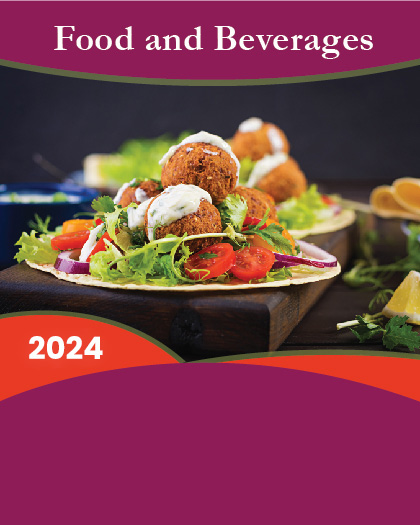
Fast-Moving Consumer Goods (FMCG) are products that are sold quickly, and at relatively low cost. Examples include non-durable goods such as packaged foods, beverages, toiletries, over-the-counter drugs, and other consumables.Many fast moving consumer goods have a short shelf life, either as a result of high consumer demand or because the product deteriorates rapidly. Some FMCG, such as meat, fruit, vegetables, dairy products, and baked goods, are highly perishable. Other goods, such as pre-packaged foods, soft drinks, candies, and toiletries have high turnover rates. Sales are sometimes influenced by holiday or seasonal periods.
The FMCG (Fast-Moving Consumer Goods) market revenue was xx.xx Million USD in 2019, and will reach xx.xx Million USD in 2025, with a CAGR of x.x% during 2020-2025.
Under COVID-19 outbreak globally, this report provides 360 degrees of analysis from supply chain, import and export control to regional government policy and future influence on the industry. Detailed analysis about market status (2015-2020), enterprise competition pattern, advantages and disadvantages of enterprise products, industry development trends (2020-2025), regional industrial layout characteristics and macroeconomic policies, industrial policy has also been included. From raw materials to end users of this industry are analyzed scientifically, the trends of product circulation and sales channel will be presented as well. Considering COVID-19, this report provides comprehensive and in-depth analysis on how the epidemic push this industry transformation and reform.
In COVID-19 outbreak, Chapter 2.2 of this report provides an analysis of the impact of COVID-19 on the global economy and the FMCG (Fast-Moving Consumer Goods) industry.
Chapter 3.7 covers the analysis of the impact of COVID-19 from the perspective of the industry chain.
In addition, chapters 7-11 consider the impact of COVID-19 on the regional economy.
The FMCG (Fast-Moving Consumer Goods) market can be split based on product types, major applications, and important countries as follows:
Key players in the global FMCG (Fast-Moving Consumer Goods) market covered in Chapter 12:
WH Group
Yurun Group Ltd
AB InBev
Toyo Seikan Group
Dr. Pepper Snapple Group
Coca-Cola
Cape Cod
Heineken NV
Carlsberg Group
Hangzhou Wahaha Group Co Ltd
Kraft
Want Want Group
SAB Miller
Link Snacks
Tsingtao Brewery Co Ltd
Nestl SA
COFCO Group
Diageo
Utz Quality Foods
Pepsi
Tianyi
Frito-Lay
Uni-President Enterprises Corporation
Bright Food (Group) Corp Ltd
China Mengniu Dairy Co Ltd
Kellogg
Shuanghui Group
Accolade Wines
Carlsberg
Kweichow Moutai Co Ltd
Inner Mongolia Yili Industrial Group Co Ltd
Bestore
In Chapter 4 and 14.1, on the basis of types, the FMCG (Fast-Moving Consumer Goods) market from 2015 to 2025 is primarily split into:
Dairy Products
Bakery Products
Fruits and Vegetables
Grains and Cereals
Alcohol and Drinks
Meat and Poultry
Marine Products
Tobacco Products
Edible Oil
Snacks
Others
In Chapter 5 and 14.2, on the basis of applications, the FMCG (Fast-Moving Consumer Goods) market from 2015 to 2025 covers:
Household Use
Commercial Use (Restaurant, Hotel, Bar, etc.)
Others
Geographically, the detailed analysis of consumption, revenue, market share and growth rate, historic and forecast (2015-2025) of the following regions are covered in Chapter 6, 7, 8, 9, 10, 11, 14:
North America (Covered in Chapter 7 and 14)
United States
Canada
Mexico
Europe (Covered in Chapter 8 and 14)
Germany
UK
France
Italy
Spain
Russia
Others
Asia-Pacific (Covered in Chapter 9 and 14)
China
Japan
South Korea
Australia
India
Southeast Asia
Others
Middle East and Africa (Covered in Chapter 10 and 14)
Saudi Arabia
UAE
Egypt
Nigeria
South Africa
Others
South America (Covered in Chapter 11 and 14)
Brazil
Argentina
Columbia
Chile
Others
Years considered for this report:
Historical Years: 2015-2019
Base Year: 2019
Estimated Year: 2020
Forecast Period: 2020-2025
























